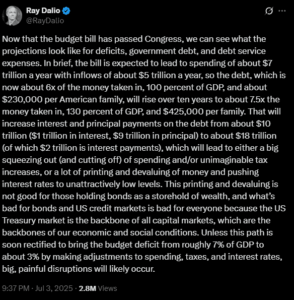
The M3GAN Cinematic Universe may have hit a stumbling block with the release of “M3GAN 2.0.” The sequel stumbled at the box office, earning just $10 million domestically and $17 million globally during its opening weekend. While these figures aren’t disastrous given the film’s $25 million budget, they pale in comparison to the original “M3GAN,” which debuted to $30 million domestically and $45 million globally in 2023. The first film ultimately became a sleeper hit, grossing $180 million against a modest $12 million budget. Several factors contributed to the sequel’s underwhelming performance, from its release timing to its thematic focus.
The Gimmick That Lost Its Charm
Before the first “M3GAN” hit theaters, the titular character had already become an online sensation, thanks to her quirky dance moves and campy appeal. However, the sequel’s lackluster turnout suggests that M3GAN’s viral charm may have been a one-time phenomenon rather than a sustainable franchise anchor. This poses a potential issue for the planned spinoff “Soulm8te,” scheduled for release in January 2026, which will also explore themes of human-android interactions.
Poor Timing in a Crowded Market
The original “M3GAN” benefited from a January release, a traditionally slow month for the box office, allowing it to stand out. In contrast, “M3GAN 2.0” was released during the bustling summer movie season, competing against major blockbusters like Brad Pitt’s “F1,” Universal’s “How to Train Your Dragon” live-action remake, and Disney’s “Lilo & Stitch.” The crowded market made it difficult for the sequel to capture the audience’s attention.
Release Date Missteps
Industry experts have noted that horror films tend to perform well in October, a missed opportunity for “M3GAN 2.0.” By opting for a summer release, the film struggled to differentiate itself as effective counter-programming amidst a sea of high-profile releases.
Shift in Tone: From Horror to Camp
Rather than capitalizing on the horror elements that contributed to the first film’s success, “M3GAN 2.0” leaned heavily into camp. The marketing campaign focused on the doll’s sassy persona, which, while entertaining, may have alienated horror enthusiasts seeking genuine scares. This shift in tone could have diluted the film’s appeal to its core audience.
The Changing Perception of A.I.
The sequel’s release coincides with heightened public concern over artificial intelligence, a theme central to the M3GAN narrative. When the original film debuted, AI was a burgeoning concept. Now, with AI frequently making headlines, the once fantastical premise of a rogue AI doll feels more like a cautionary tale than escapist entertainment.
“The first movie took place at a time when [AI] was much more nascent. You had to introduce the vocabulary of it,” actress Allison Williams told Vanity Fair. “Now, though, people are super-intimately aware of—and, I think, wary of—their use of AI. It fundamentally changes the experience of watching the movie.”
Blumhouse’s Recent Struggles
The sequel’s performance also reflects a broader trend for Blumhouse Productions, known for its string of horror hits. Recently, the studio has faced a series of underperforming releases, including “Wolf Man,” “The Woman in the Yard,” and “Drop.” While Blumhouse’s strategy of maintaining low production costs minimizes financial risk, the studio is in need of a commercial success. The upcoming release of “Five Nights at Freddy’s 2” in December is eagerly anticipated as a potential box office revival.
The lackluster performance of “M3GAN 2.0” underscores the challenges of sustaining a franchise in a rapidly evolving cinematic landscape. With changing audience expectations and increased competition, studios must continually adapt to capture and maintain viewer interest.





